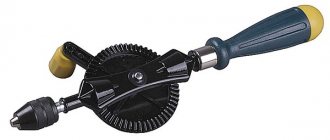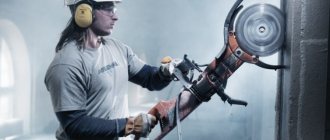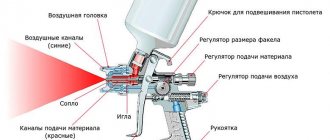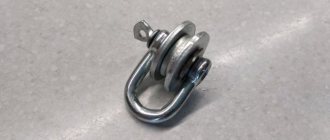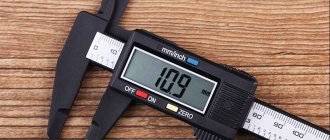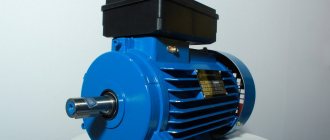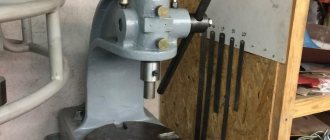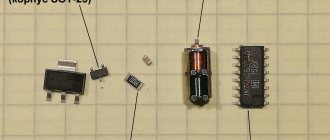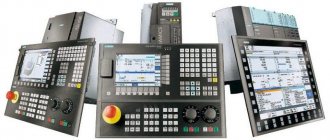The modern market offers a wide variety of technical devices that allow you to perform various technological operations. The most notable of these devices, both in terms of its functionality and compactness, is the engraver, designed for various types of processing of products from different materials. In particular, using such equipment and the working attachments with which it is equipped, it is possible to successfully perform such types of processing as drilling, milling, engraving, cutting, deburring, grinding and polishing. By equipping engravers with the appropriate working attachment, you can equally successfully use them for working on metal, wood, stone, glass and many other materials.
Wood carving with electric engraver
Purpose and principle of operation of the engraver
The engraver, although universal, is still intended to perform highly specialized work.
Its most common type is an engraving machine with an electric drive, the working element of which is removable attachments that exert a mechanical effect on the surface being processed.
The laser version of this tool does not directly contact the part, but burns the material with a high-energy beam.
This tool does:
- Engraving on stone, wood, metal and even glass. Similar operations are carried out in the manufacture of, for example, souvenirs. The corresponding attachment is clamped into the collet and the engraver can be used to draw on various materials.
- Removing coatings, such as sanding paint and sanding small items or hard-to-reach areas using felt pads, sandpaper and abrasive wheels.
- Making thin cuts, precision cutting in wood and metals. The tool is common among jewelers, as it allows for precise, accurate processing of materials.
In addition, the engraver applies markings, in particular on metal parts, makes seals and impact stamps, and cliches.
Mechanical and laser engraving is used by advertising agencies to apply text and graphics to a variety of materials.
Makita GD0603
Main characteristics:
- Power 240 W
- Disc rotation speed up to 28,000 rpm
- Weight: 0.97 kg
Housing and ergonomics. This model has the appearance of a cylinder with a narrow working end, which improves the accuracy of the operations performed and provides access to hard-to-reach places. The plastic body with a rough surface is easy to hold in your hands. With a maximum diameter of 67 mm and a length of 289 mm, the weight of the device reaches 970 grams, which is slightly higher than most competitors. Equipped with front lighting and a bracket for hanging on a tripod.
Bracket for hanging on a tripod.
Functionality and capabilities. The engine of this engraver develops power up to 240 W, but has no speed control and is capable of speeds up to 28,000 rpm. The machine drive is mounted on four reliable bearings, which reduces the level of vibration and increases the accuracy of work. For operation under increased loads, a 6 mm collet chuck is provided.
Equipment. The model comes to the retail chain in a disposable box with a key and a pair of grinding attachments.
Equipment Makita GD0603.
Pros of Makita GD0603
- High-quality assembly, durable plastic.
- High power.
- High rotation speed.
- Double electrical insulation.
- Backlight.
- The start switch is located in a recess, which eliminates accidental starting.
- Affordable price.
Cons of Makita GD0603
- Minimum equipment.
- One speed.
- Relatively heavy weight.
What material can the engraver process?
The engraver is used to process a wide range of materials with different properties, including glass, hard metals, ceramics, bone, and wood.
Plastic and stone were not left out.
Due to this, the tool is popular among car mechanics, furniture makers, designers, and model makers.
Also, the engraver is often used when carrying out repair and construction work, in production.
The laser engraver is capable of processing all materials, with the exception of some types of plastic.
Types of engravings
When working as an engraver, depending on the desired end result, one of the following types of material processing is used:
- Deep (relief) engraving – used where high precision and detail of application are required. The final goal can be both aesthetic beauty and reusability of the processed product. Using laser equipment, application depths of up to 1 mm are achieved, and the detail remains at a high level.
- Shallow engraving - used for applying images, inscriptions and logos with high precision, mainly on metal products. For laser engravers, the burning depth of the top layer does not exceed 50 microns. Laser marking is performed to a depth of 0.5 - 3 microns.
To engrave on a surface, a parallel movement of the working element relative to it, and perpendicular, is necessary.
Working on a plane does not cause any problems, but for cylindrical products it is important that the same laser beam goes perpendicular to the tangent.
For this reason, engraving along the circumference (circular) is used here, which is found, for example, on printing rollers, rings, and dishes.
Its meaning lies in the fact that the workpiece is fixed in a special rotator, the movements of which are synchronized with the movements of the engraver’s working element.
Device and characteristics
The design of engravers of different types is very different.
For example, laser equipment affects the surface being processed with a concentrated beam of light transmitted through a complex system of optical lenses, focusing on a coordinate area.
The elements of a laser engraver, in addition to the optics itself, include:
- Transmission – moves the light emitter (laser beam) through three-axis servos.
- Control system – ensures the coordinated operation of other systems through special electronics and sensors.
- Mechanics – load-bearing units and mechanisms that form the basis of the engraver.
- Cooling system – removes excess heat from the emitter. It is usually based on radiators and coolers.
As for the electric tool familiar to everyday tasks, its design is much simpler and perhaps resembles a miniature drill.
This is often an elongated housing, inside of which there is an electric motor with a shaft that rotates the cartridge.
The latter is necessary for installing all kinds of attachments.
The tool starts when you press the start key, and the spindle lock function is used to simplify tool replacement.
Material
An electric engraver is also known as a drill or straight grinder.
Its body is made of plastic resistant to mechanical and thermal influences.
Ergonomics allow you to comfortably operate the tool with one hand; most models have anti-slip pads made of elastic rubber.
The gearbox can be enclosed in either plastic or metal.
In the latter case, we are talking about powerful straight grinders designed to perform complex work.
Dimensions and weight
The length of a hand engraver is usually 130 - 340 mm, width 14 - 24 mm, and weight 0.3 - 1.6 kg.
Some models may have dimensions comparable to a hand drill.
Hand-held engravers are equipped with collet chucks ranging in size from 0.8 to 4 mm.
Engine type and power
A commutator motor is installed in the monoblock body of a direct rotary power tool, in which the spindle is essentially an armature shaft.
In other words, the gearbox is simply missing.
There are also geared models with high torque.
The power of the electric motor affects both the actual cost of the tool and the cost of its use.
Models with a power of up to 200 W are suitable for solving household problems, and for professional use – over 200 W.
The motor power can be 9 – 2000 W, depending on the specific tool.
Rotational speed
The spindle revolutions per minute of a hand engraver range from 3 to 40 thousand.
This parameter determines the efficiency of working with each specific material, as well as the possibility of performing a certain type of work.
The engraver is equipped with a function for adjusting the spindle speed, either manually or electronically, which allows for high-quality processing.
For example, when grinding and polishing, the speed should be low to avoid overheating of the surface.
It is necessary to sharpen the tool and cut material at high speeds.
For modern models, their indicator varies in the range of 15 - 35 thousand rpm.
Working time without interruption
The continuous operation time of an electric engraver depends primarily on the cooling system.
Professional models are designed for long-term continuous operation, while for household devices it is recommended to alternate 10-20 minutes of operation with 5-minute breaks.
Otherwise, the engraver may fail due to overheating.
Engraver equipment
The equipment of the electric engraver depends on the manufacturer.
The tool may be accompanied by the following additional elements, providing the ability to perform various types of work:
- Flexible shaft – allows for precise machining using a relatively large engraver.
Together with the shaft, a frame is needed, which, in essence, turns the hand tool into a miniature machine by means of its fixed fixation. Typically the frame dimensions are 500 - 650 mm. There are also stands on which the instrument is simply suspended. - Collets of different sizes. Often in the kit the buyer sees two collets for 2.4 and 3.2 mm.
- Removable battery if we are talking about a cordless tool.
The kit may also include attachments that expand the scope of use of the engraver:
- Circular nozzle for direct engraving. As a rule, it has a diamond coating.
- Engraving cutter – for engraving and milling.
- A polishing wheel, often accompanied by polishing paste.
- A rubber roller with a replaceable sanding belt, or rather cylinders of sandpaper.
- Cutting wheels with fastening pin.
In addition to the above-mentioned attachments, the kit may include drills, a stone for sharpening tools, stripping brushes made of metal wire and fishing line.
Additional functions
The engraver can be equipped with additional functionality that increases not only the ease of use, but also its reliability.
This includes overload protection, spindle locking, and the ability to change the speed of rotation of the equipment.
In the latter case, the tool can be equipped with either a slide switch between several fixed speeds, or a regulator for smoothly changing the spindle speed in a certain range.
Dremel 4000-4/65
Main characteristics:
- Power 175 W
- Disc rotation speed up to 35,000 rpm
- Weight 0.66 kg
Housing and ergonomics. This engraver has an elongated body made of impact-resistant plastic with embossed rubber inserts for better contact with the hand. It has a steel loop for hanging over your work area and a removable side handle. All controls are located on one side of the device.
Functionality and capabilities. The tool connects to a household electrical outlet and consumes 175 W. It has a wide speed range from 5000 to 35000 rpm with electronic frequency stabilization, which allows you to perform any work. The EZ Twist tip allows for quick, finger-tight attachment changes. A collet clamp with a diameter of 0.8 to 32 mm is used here. For ease of switching, a spindle lock is provided.
Equipment. The set comes in a durable plastic case. It includes a flexible shaft for fine work, a milling compass, a platform for sharpening and grinding, and 65 small attachments for various purposes. The latest EZ package adds a plastic storage case for the engraver with a cord winder that can be mounted on the wall.
Plastic case with a groove for winding the cord.
Watch the product video
Pros of Dremel 4000-4/65
- High functionality.
- Ergonomic shape of the body and handle.
- Not a bad package.
- Case.
- Replacing attachments without using wrenches or other tools.
Cons of Dremel 4000-4/65
- Perceptible vibration.
- Not the most durable plastic.
- Expensive original consumables and additional attachments (if you have to buy them).
Types of engravers and their prices
Models of this tool are distinguished by design, technical characteristics and principle of operation.
But their main purpose is to perform engraving and related work.
The most expensive and technologically advanced device is laser equipment.
Laser engraver
It is a separate class of engraving equipment, designed, in fact, to perform engraving using a laser beam.
This technique is suitable for processing almost any material, and in turn is divided into:
- Gas equipment – used for cutting any materials and engraving non-metallic surfaces.
- Fiber and solid-state engravers are devices that, depending on the type of laser, are used for engraving both metal and non-metal surfaces.
In the first device, the laser is an element of an optical fiber, and in the second, the active medium is a substance in the solid state.
The device, in which the work is performed by a laser beam, is either a desktop design or a full-fledged CNC engraving machine.
Both options are used in the production of outdoor advertising, various packaging, and artistic engraving.
The price is approximately 150 - 180 thousand rubles for the first and from 300 thousand rubles for the second.
Laser mini engraver
It has more compact dimensions and limited functionality.
The kit always comes with a software disc.
The approximate price of such models is 86,000 rubles.
The milling engraver is completely different in design and operating principle.
This is mostly a hand-held electric tool, the working element of which is various attachments (including cutters) driven by an electric motor.
Due to this, the tool can safely be called multifunctional.
Based on the power source there are:
Rechargeable
These are all-body options - powered by a battery, which makes such devices mobile.
This design allows you to work anywhere.
When working with wet materials, such a tool is considered the safest.
Price – from 2.6 thousand rubles.
Network
Models - powered from the mains.
Household options are suitable for simple tasks, often do not have effective cooling, have low power and require regular breaks in operation to avoid overheating.
At the same time, professional models are equipped with many additional functions and are designed for long-term continuous operation.
This also applies to mobile engravers.
The cost starts from 1500 rubles. reaches 12 thousand rubles and above, depending on the manufacturer, configuration and power.
The last of those listed by design are in turn divided into several more types:
Impact engraver
A tool whose operating principle is very similar to a hammer drill.
Most often used for dot engraving, sometimes, if you choose the right equipment, it is used for wood and metal carving.
Such devices make contour drawings on stones; it is possible to work with glass, however, in this case there is a risk of simply splitting the material.
The final result is a silky finish.
Solid body
A tool in which the handpiece and electric motor are located in the same body.
This is precisely a straight grinder, which is sometimes also called a multi-engraver or mini-drill.
This is the most common option, the principle of which is based on the rotation by a motor of a spindle with a chuck and an attachment inserted into it.
The versatility of this type of engraver is undeniable, since you can select several dozen units of completely different attachments for it, thereby turning the device into a small router, a drill, and a cutting tool.
The functionality of this portable equipment is further expanded by means of a flexible shaft and a special stand, which together turn it into an analogue of pendant models.
Hanging
A housing having a mount that allows it to be suspended on a stand, to which the tip is connected by means of a flexible cable.
The rotation speed here is regulated by a foot pedal.
Microengraver
A tool in the form of a pencil or writing pen, designed for fine processing of various materials, including jewelry.
Another option for an engraver is a pneumatic tool connected to a pneumatic line with suitable characteristics, including ordinary air compressors.
The work is based on the conversion of compressed air energy, and similar models are often called pneumatic cutters and pencils.
Their difference from power tools lies in their design simplicity and longer service life.
Engravers also include special machines for manicure and pedicure, the operating principle of which is similar to the cordless tool mentioned above.
Some models are made in the form of a separate power supply with various regulators, to which the “pencil” itself is connected.
Some CNC machine equipment designed for 2D and 3D engraving uses a conical engraver as a working element.
This is not an independent tool, but an attachment with one, two or three edges, through which various designs and patterns are applied.
Using overhead drills
This type of instrument is strikingly different from the classic form of an engraver, since the body has the shape of a square or cylinder. The main body is hung on the nearest wall, and a flexible shaft comes from the frame.
At the end of the shaft there is a working part resembling a sting. Another essential part is the foot pedal, which activates the engine or turns it off.
The advantages of choosing include:
- Convenient control of the rotation speed of the collet.
- Using only the working part in the work, and the main body does not impede the creative process.
- Low noise level.
The only disadvantage of this model is the price, which often limits the buyer’s choice.
Which engraver should you choose?
The choice of engraver is based on the quantity, frequency and type of work performed.
For a home, an electric device with a power of 100–200 W will be quite sufficient, but with the condition of infrequent use.
For professional work involving intensive processing of hard materials, you will need a reliable engraver designed for long continuous operation, with a motor power of more than 250 W.
In general, high power is not always needed.
NOTE:
For decorating soft materials, 35 W is enough, and a 150 W device can handle almost any artistic decoration.
When buying a tool, you should pay attention to its functionality.
The ability to attach a flexible shaft will significantly increase the ease of use of the engraver, especially in hard-to-reach places.
A good tool always has a smooth speed control, not a stepwise one.
The presence of a large number of different attachments in the kit is another plus.
Important!
Make sure that the collets have a common size (2.4 and 3.2 mm), which will allow you to easily purchase suitable cutters and other consumables in the future.
In addition to the tool itself, you should also pay attention to the presence of a case or container that will provide convenient transportation and storage of the entire set.
Features of networked drills
The most famous models are engravers that operate from an electrical network. In appearance, such designs resemble a ballpoint pen, have a convenient shape and are light in weight.
- A power cable extends from the housing, allowing you to turn on the power to the motor.
- Another characteristic feature of this model is the presence of a flexible shaft.
- The shaft is fixed in a collet, and at the very end there is a chuck.
If you have a large volume of tasks, you can place the tool on the working surface and use your fingers to fix only the end of the shaft. Before purchasing new equipment, you should make sure that the shaft is removable and can be replaced in case of breakdown.
What you need to know about engravers?
Electric engravers are used, as already mentioned, to perform the corresponding work manually.
Compared to them, laser engraving machines have a number of significant advantages:
- Areas of the workpiece that are not subject to mechanical impact remain geometrically stable.
- Extremely high precision and clarity of engraving, which is almost impossible to achieve using a classic hand engraver.
- Cost-effective compared to conventional tools. Laser equipment consumes up to 15 times less energy.
- There are no rubbing parts, and as a result – a high working life.
- The ability to choose between stationary laser machines and mobile desktop models that can be installed in any workshop or even in the home.
- Possibility of organizing mass production of decorative products in the shortest possible time and with minimal investment.
Of course, the most important advantage of laser machines is the accuracy of processing and the ability to perform a large number of completely identical operations.
